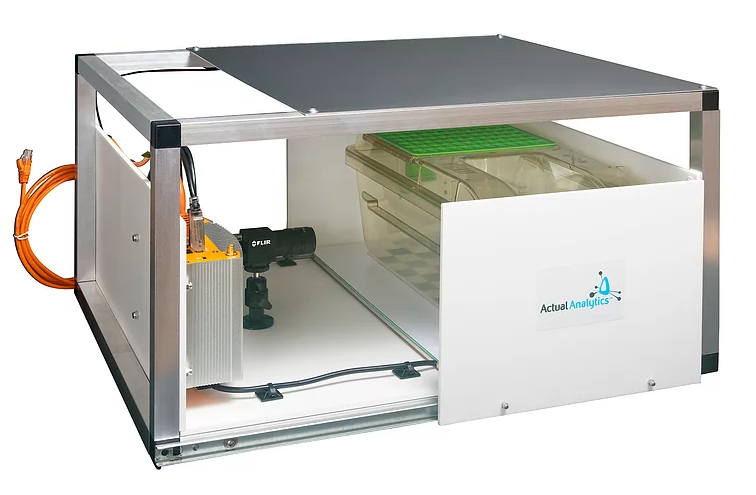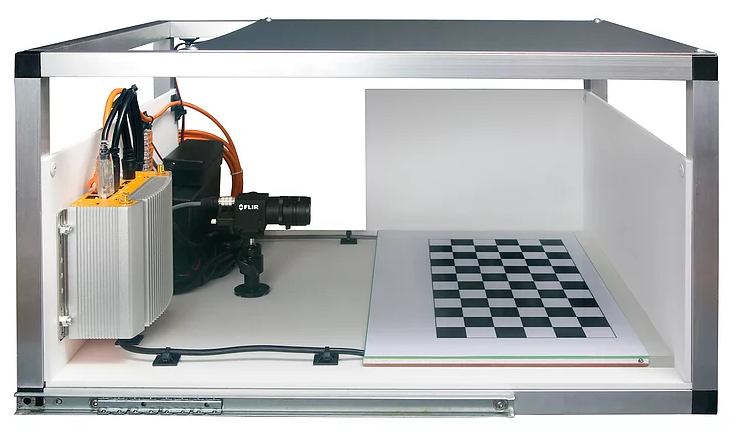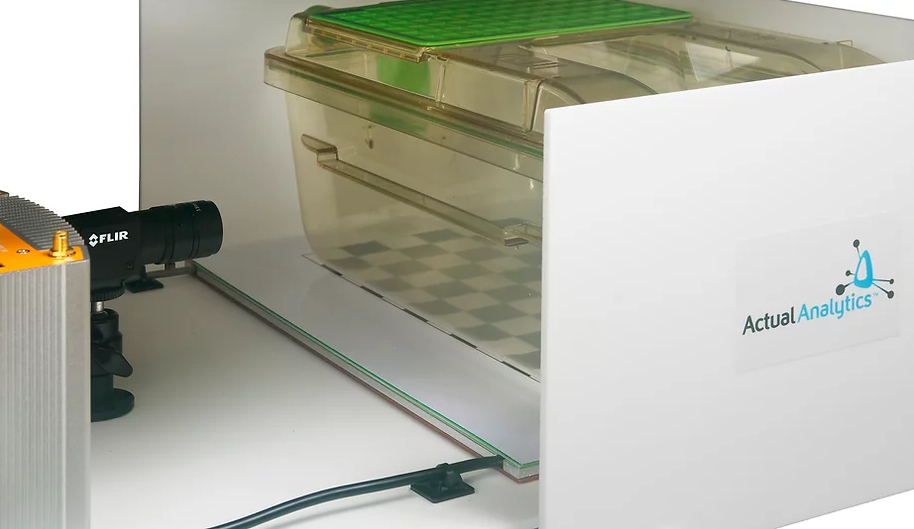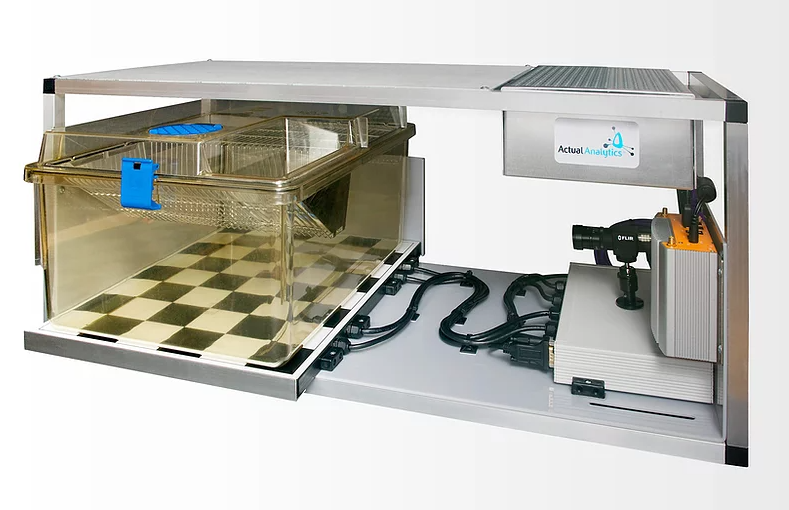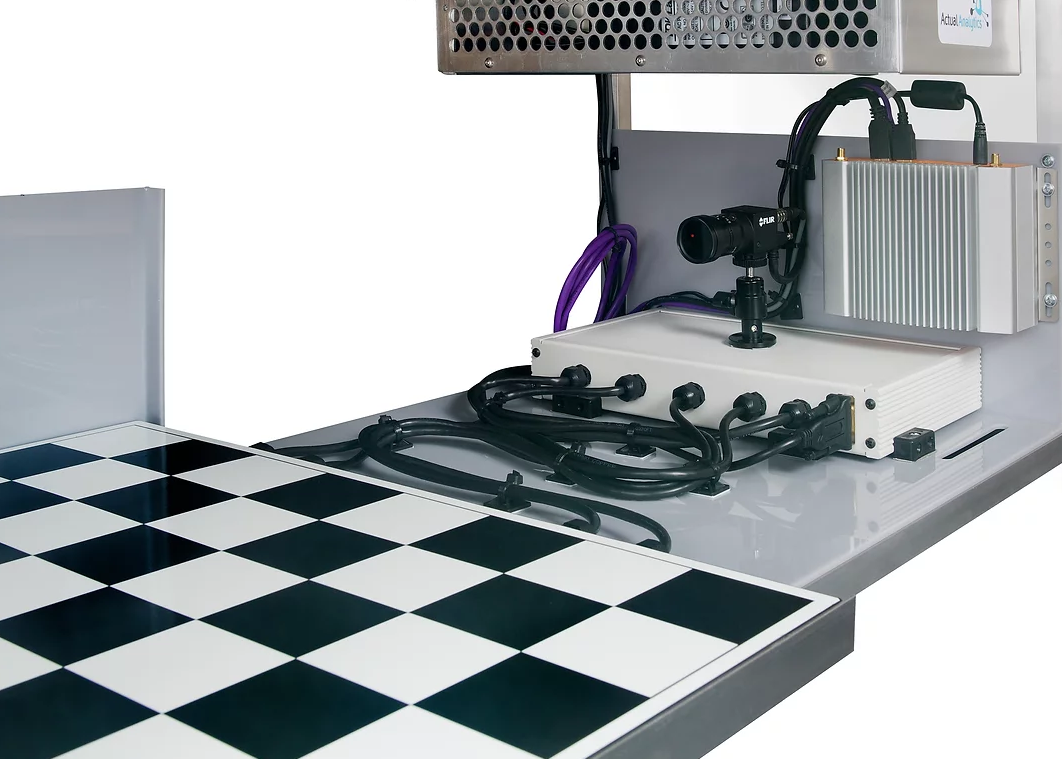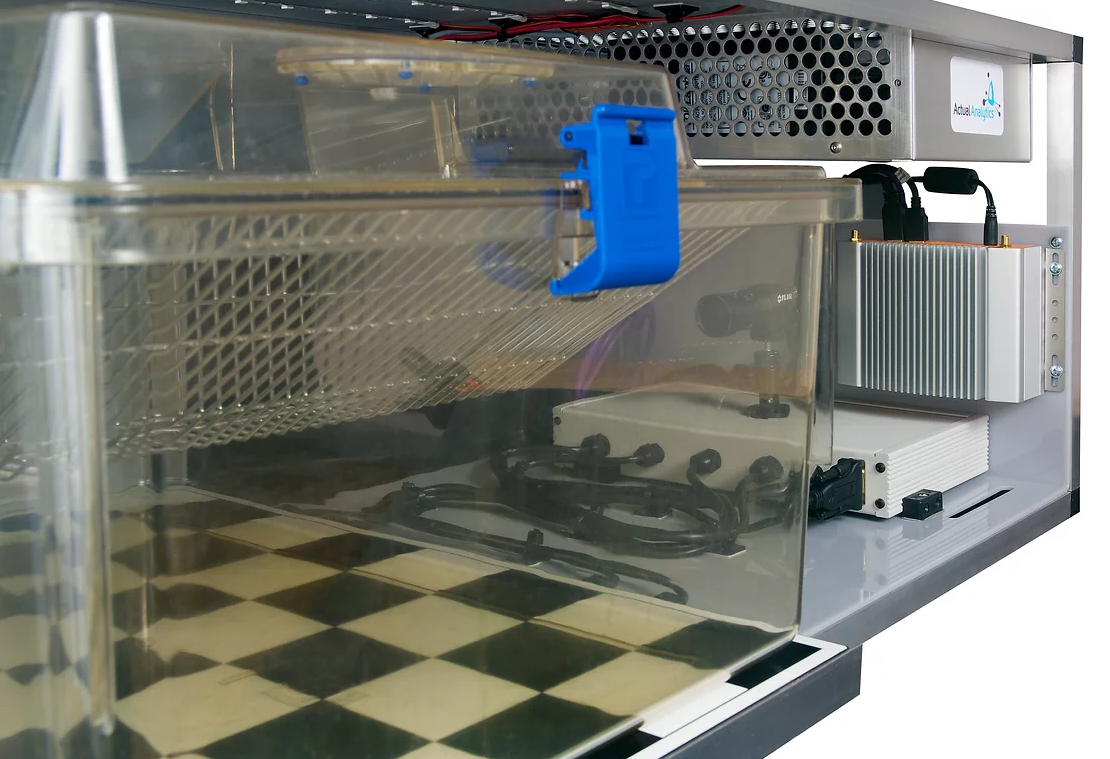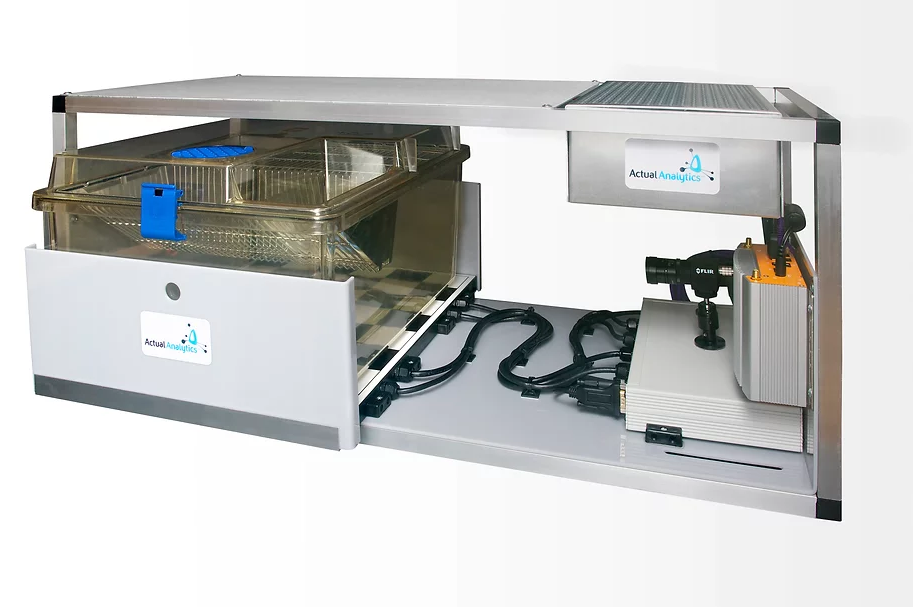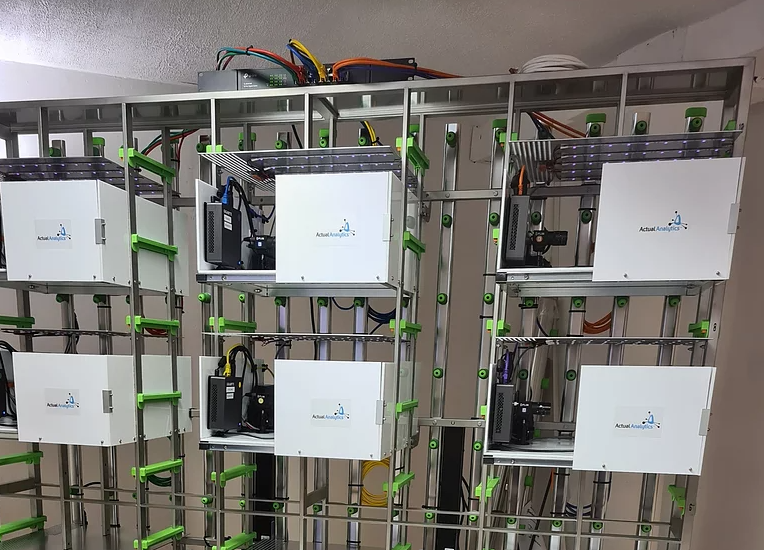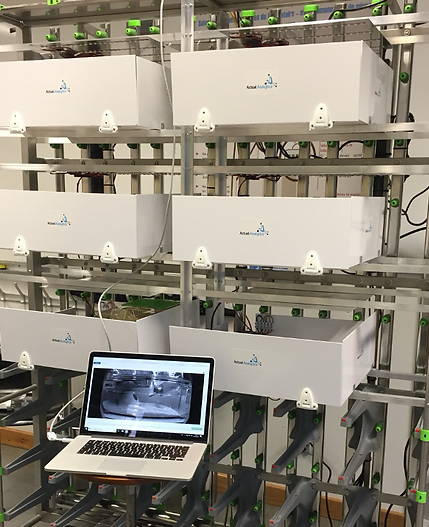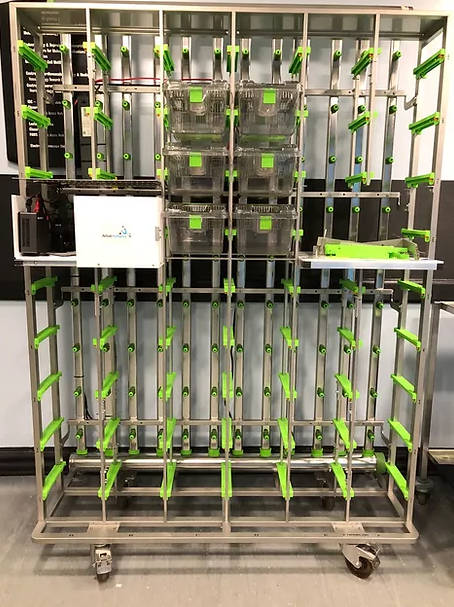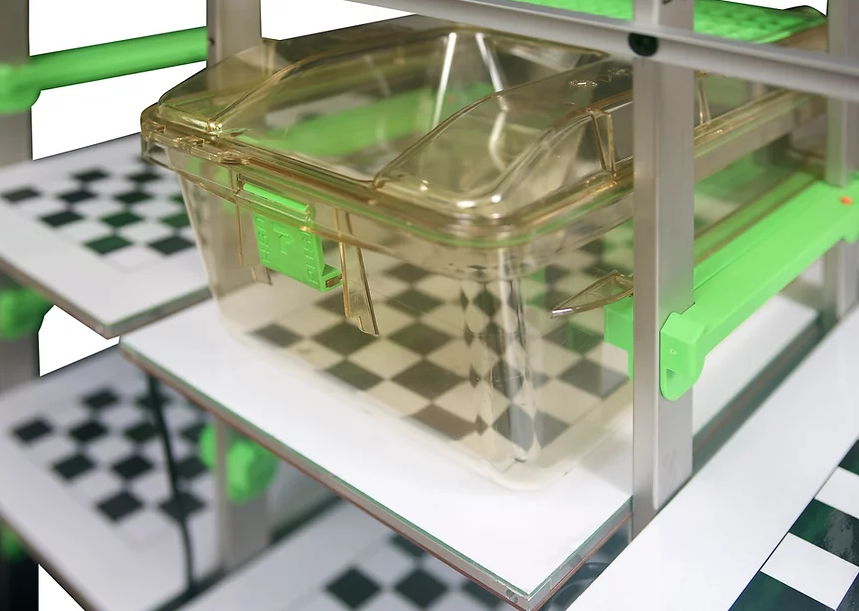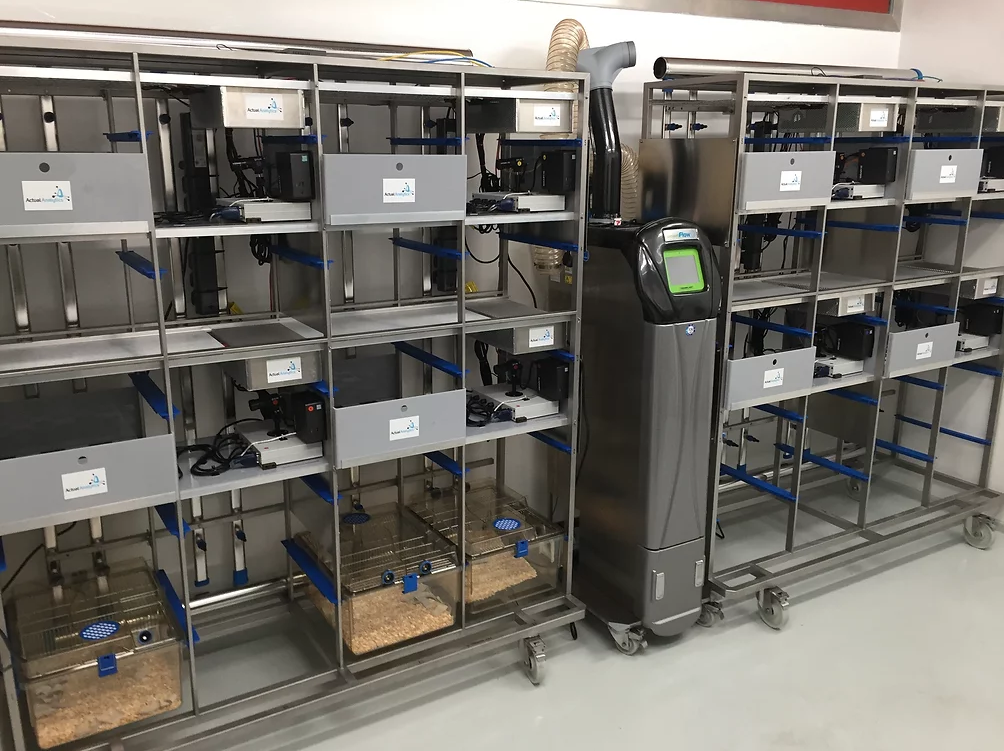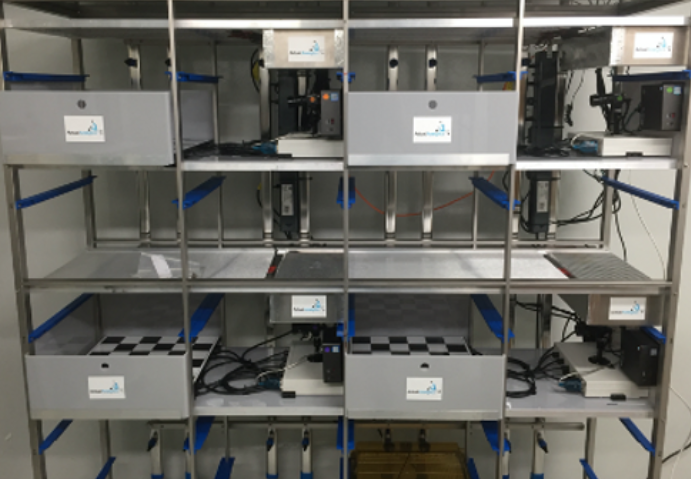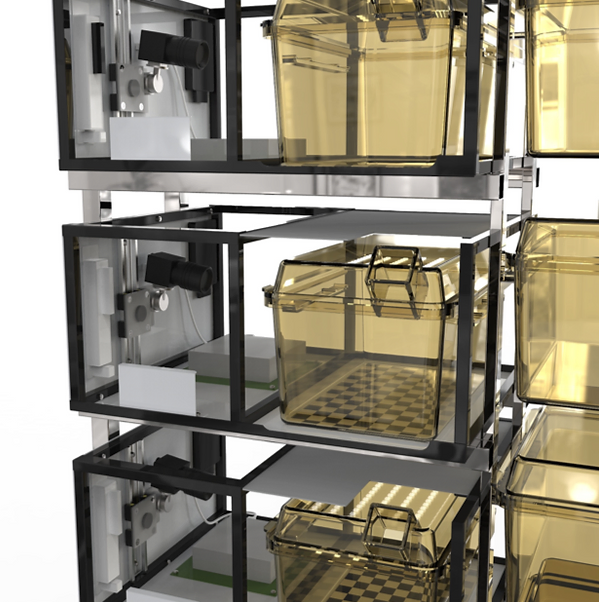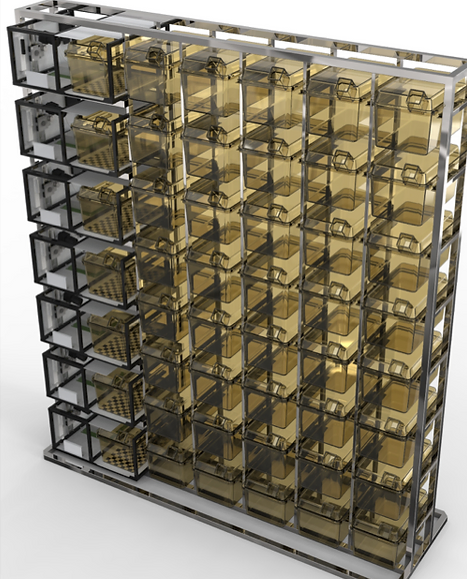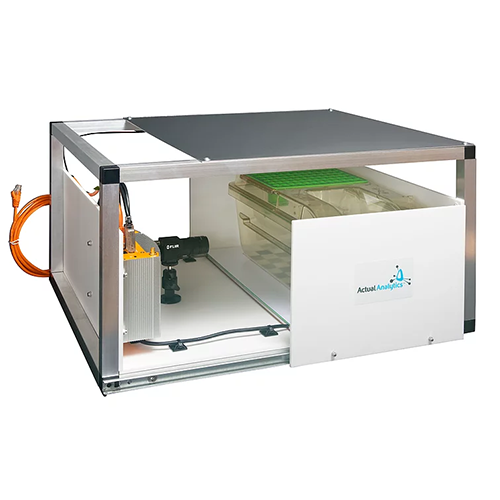 HCA Mouse Desktop
HCA Mouse Desktop
ActualHCA (Home Cage Analyzer)
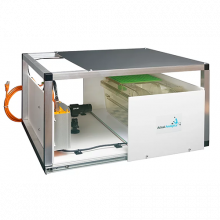
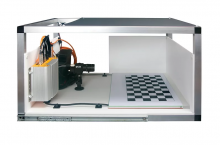
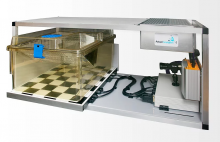
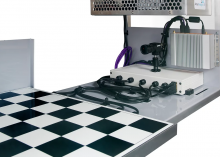
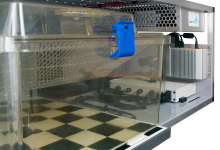
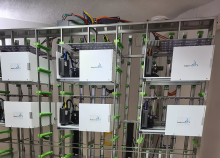
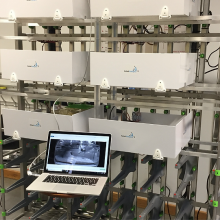
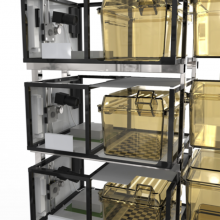
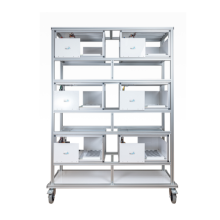
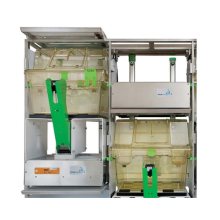
24/7 Data Capture and Analysis of Complex Behaviors of Group Housed Rodents in their Real Home Cage!
Rodent behavior analysis plays a vital role in drug discovery, from the development of disease models to safety pharmacology, but the activities of rodents in their homecage are almost entirely unobserved by researchers. Scientists are missing powerful digital biomarkers that can transform research. The Actual Analytics Home Cage Analyzer (ActualHCA) offers a universal solution that provides automatic, round-the-clock monitoring of socially grouped animals.
What Is the Home Cage Analyzer?
ActualHCA is an innovative home cage analysis system that provides 24/7 monitoring of rodent behaviors in a group-housed environment that is beneficial from both data and welfare perspectives.
ActualHCA provides automated analysis of discrete behaviors, body temperature, and locomotor activity, tagged to each individual animal within their normal social group. Isolation of individual animals is no longer needed to collect rich behavioral data. Monitoring rodents in this non-invasive manner produces highly reproducible and robust data for a wide range of scientific applications.
The HCA technology is a modular, scalable, and universal solution which can be installed in all animal facilities. As an add-on to existing rodent home cage systems, the Home Cage Analyzer is compatible with a range of rat and mouse homecages and racking systems, including IVC systems. The Home Cage Analyzer sits alongside a normal homecage and collects data from the group of animals in the adjacent cage.
ActualHCA is the next generation of rodent analysis technology, surpassing all other technologies and methods available today. For more information, please contact us.
Socially Grouped Animals
RFID microchips allow the system to record and analyze individual rodent behavior whilst retaining their social groups. This provides you with analysis of discrete behaviors, temperature and locomotor activity tagged to each individual animal within their social group. The social interactions within the groups are measured. These are powerful digital biomarkers that would otherwise be lost.
24/7 Analysis
Data is recorded around the clock with no time limits. Infrared lighting provides HD quality video day and night.
Universal
The System does not use a bespoke cage/arena; it really is their home cage. The HCA system is available in desktop or rack-mounted where it fits into most standard IVC racks regardless of the type of caging you currently have. There is no need to modify existing caging.
Scalable
The system is highly deployable and scalable. Multiple units can be installed per rack to meet the specifications of your experiments.
Multiple Data Levels
The system collects data for each individual animal on various levels, locomotor, temperature and behavioral. This includes discrete behaviors such as drinking, eating, and climbing, as well as circadian rhythm and locomotor data.
3Rs Benefits
The quantity of longitudinal data gathered provides additional statistical power, meaning fewer animals are required. The behavioral data collected is entirely non-invasive and based on identifying individual behavior in the home cage and does not require social isolation of the animals. Remote observation capabilities facilitate enhanced welfare monitoring. Live data analytics can flag potential welfare issues in real time.
Live Alert System
Data analysis occurs during the study. Data events from live analysis can be used to drive welfare alerts. Alerts indicate if an animal starts behavior abnormally, and perhaps needs attention from staff.
Remote Access
The system allows you to remotely observe your animals throughout the experiment via a live video feed. Not only does this save you time and resources, but it also enhances your welfare monitoring. The HD IR video allows you to zoom into specific behaviors, with live analytics flagging potential welfare issues in real time.
Multiple Applications
Testing within the home cage is suitable for a number of interest areas, including but not limited to:
- Detecting and assessing safety/toxicological effects of candidate drugs.
- Behavioral phenotyping of genetically altered animals.
- Longitudinal analysis of animal cohorts across many months.
- Drug efficacy studies.
- Studies of circadian rhythms.
- Studies of social interactions.
The ActualHCA product line includes a Mouse Desktop, Rat Desktop, Mouse Rack, Rat Rack, and Double-Decker Rat Rack. The desktop units feature highly deployable benchtop designs. An integrated acrylic lighting backdrop ensures video consistency. The rack installed systems fit standard IVC racks. They are compatible with a range of popular Tecniplast and Allentown racks, and other systems upon request.
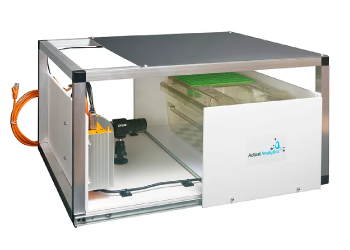
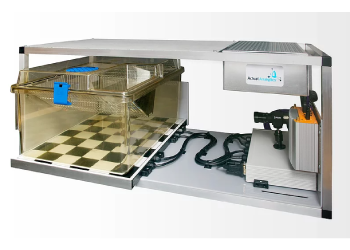
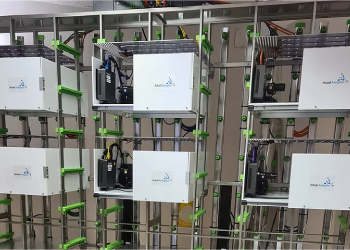
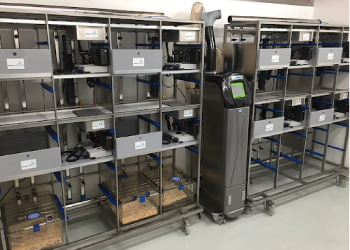
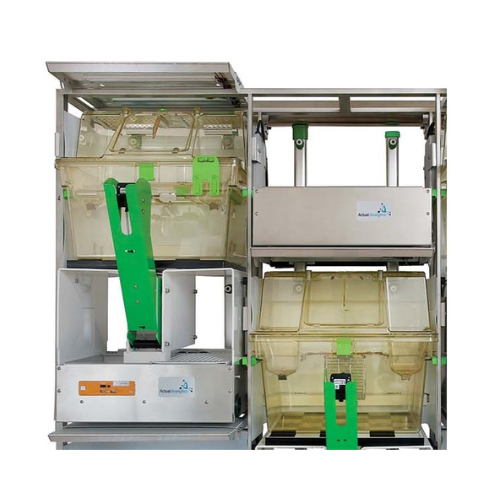
-
Identification of Altered Evoked and Non-Evoked Responses in a Heterologous Mouse Model of Endometriosis-Associated Pain.
-
Phenotyping in Mice Using Continuous Home Cage Monitoring and Ultrasonic Vocalization Recordings.
-
Forward genetics identifies a novel sleep mutant with sleep state inertia and REM sleep deficits.
-
The effects of microchipping C57BL/6N mice on standard phenotyping tests.
-
Temporal dissociation of phencyclidine: Induced locomotor and social alterations in rats using an automated homecage monitoring system - implications for the 3Rs and preclinical drug discovery.
-
Drug-responsive autism phenotypes in the 16p11.2 deletion mouse model: a central role for gene-environment interactions.
-
Loss of Frrs1l disrupts synaptic AMPA receptor function, and results in neurodevelopmental, motor, cognitive and electrographical abnormalities.
-
Studies on long term behavioral changes in group-housed rat models of brain and spinal cord injury using an automated home cage recording system.
-
Regeneration of Dopaminergic Neurons in Adult Zebrafish Depends on Immune System Activation and Differs for Distinct Populations.
-
Timing of host feeding drives rhythms in parasite replication.
-
Pharmacological validation of individual animal locomotion, temperature and behavioral analysis in group-housed rats using a novel automated home cage analysis system: A comparison with the modified Irwin test.
Tse et al., Journal of Pharmacological and Toxicological Methods (2018)
-
Rodent Big Brother: Optimal Positioning of the Subcutaneous RFID Microchip Transponder for 24/7 Home Cage Monitoring in Rats.
Tse et al., Journal of Pharmacological and Toxicological Methods (2017)
-
Rodent Big Brother: A Comparison to the Modified Irwin Test for Assessing Drug-Induced Changes in Activity and Temperature in Rats.
Tse et al., Journal of Pharmacological and Toxicological Methods (2017)
-
Rodent Big Brother: Automated Video Recognition of Home Cage Behaviours in Safety Pharmacology and Toxicology Studies in Group-Housed Rats.
Tse et al., Journal of Pharmacological and Toxicological Methods (2017)
-
Assessing Mouse Behaviour Throughout The Light/Dark Cycle Using Automated In-Cage Analysis Tools.
-
Automated Recording Of Home Cage Activity And Temperature Of Individual Rats Housed In Social Groups: The Rodent Big Brother Project.
-
Analysis of Individual Mouse Activity in Group Housed Animals of Different Inbred Strains Using a Novel Automated Home Cage Analysis System.
-
Tracking Of Individual Mice In A Social Setting Using Video Tracking Combined With Rfid Tags.
-
Circadian rhythms in malaria parasites?
-
Rodent Big Brother: Development And Validation Of A Home Cage Automated Behavioural Monitoring System For Use In Repeat-Dose Toxicity Studies In Rats.
1. How long will the system run for?
As long as is needed. The Home Cage Analyzer captures data 24 hours a day, 7 days a week, ensuring you never miss key events.
2. How many rodents can be tested in one cage?
Three is optimal to achieve highly accurate identification and tracking. Four may be possible, however as numbers increase there will be more events where the video is occluded.
3. Is the system different for mice and rats?
Yes. Mice and rats obviously differ in size, as do their cages, so the systems are calibrated accordingly. Different baseplates are required for each species. In the case of mice, smaller RFID chips may be used (subject to system setup), however only the Biomark Biotherm 13 will provide temperature data.
4. Do I need to fund any of my own equipment?
Installation, support, software, and the entire system are all included. You only need to provide your own standard cages and rodents. Behavioral analysis will require the use of a server.
5. How will different enrichment, such as "huts", and different bedding impact activity?
Bedding comes in various forms, but very thick bedding can lead to poorer data. Enrichment is no problem; translucent red plastic tubes are very easy to integrate as the HCA's infra-red camera can see right through them. If you use opaque plastic or cardboard the camera will not be able to detect rodent behavior, but positional data collection from the RFID chip is retained.
6. How quickly can I see my data?
The first experimental data can be accessed after 15 minutes. Each cage has an individual local computer that gathers the raw data: the video feed and the feed from the baseplate. This data is stored safely locally and gathered by a server unit every few minutes. If you have outside access to your server, you can access this raw data remotely. Within minutes of the trial starting, you start to receive data.
All video is stored by default, and you have full control over the storage and retention of the data. As soon as the data reaches the server the analysis begins, in order to overlay the behavioral analytics onto the data. It is also possible to conduct analysis during the experiment – the experimental data can be exported into a statistical package like Microsoft Excel for further study.
7. What, if any, are the size restrictions for the rodents? Is there a suggested body weight range to ensure proper tracking?
We have not come across any animals that are too large or small yet. Very young pups may be too small for the RFID tags.
8. How do you analyze the "cage" factor in pharmacology studies when animals are housed in collective cages?
In collective cages, you can run all animals under the same treatment regime or put them in mixed groups. The choice depends on the study design and what other tests are planned for the animals. With either variation, individual identity retention and tracking means you can automatically measure interactions between cage mates during the study. You will also have the videos if specific dominant traits need to be confirmed.
9. Regarding the automated scoring algorithms, what tracking information is going into the classifiers? Can the user train new classifiers for behaviors?
Each algorithm is different. For any new behavior, we typically collect a set of ground truth annotated examples in the system in collaboration with an expert user in the domain. We then review a small selection, propose draft solutions, and implement a test version that we refine on the larger dataset (retaining samples for validation testing).
Once the user and ourselves are satisfied that the algorithm is useful, we integrate it into the suite that is run on the analysis server. Once added, revisions can be rolled out as it is improved. At present, users cannot train their own classifiers within the system and will need to work with us.
10. Are there specific brands or types of IVC units it is designed for?
Yes, we have working systems using Tecniplast Blue Line and Green Line and Allentown Type 2 cages. Others are available upon request.
11. How do you deal with animals being hidden behind cage mates or bedding/nesting material?
The baseplate and RFID do the majority of that work. Even when the animals are hidden you can still identify who is who, their location, and how mobile they are. The camera experiences rare occlusion events, but these are minor in the context of the entire multi-day data set.
12. What are the computer and network requirements (infrastructure) on the front and back end to adequately drive the analysis software and collect data?
We supply the front-end software with each system. The back end requires a server, but we have designed such that low specification workstations/servers can be used. Most of our customers use sub-$2000 servers for four to eight cages. The systems need network access (typically DHCP) but this can be within a confined intranet. 100BaseT or gigabit Ethernet is ideal. The systems can be accessed remotely, but this needs to be handled by your local network support team.
13. What are the 3Rs benefits?
- Refinement: The behavioral data collected is entirely non-invasive and based on observing group behavior in the home cage.
- Reduction: The quantity of longitudinal data gathered provides additional statistical power, meaning fewer animals are required.
- Replacement: Use data stored on your computer from previous experiments to reanalyze using different parameters.
14. What else can the system be used for beyond the examples given?
The system will automatically detect abnormal motor events. Instead of examining hours of video footage, you can simply manually assess the abnormal behavior and verify the event; a convulsion, for example. ActualHCA also offers exciting possibilities for defining aggression better and timing mating properly, which in turn offers the opportunity to study fertility much more closely. In addition, the opportunity to study the social interaction of rodents within their true home cage is valuable. The system is designed to ensure that all the raw data is securely stored, for as long as you need or want it. If you want to apply new algorithms to existing footage instead of repeating an experiment, you can.
15. Can the system be used and controlled remotely?
There is the ability to export a live feed. If you have the appropriate network connections, you can see what's happening live or log into the server with a short delay.
The system requires very little configuration once it's up and running. Studies can use ActualHCA successfully for days, weeks, or months.
Boca Scientific is your premiere source for high-quality, innovative solutions for Cell Biology, Molecular Biology, Immunology, genetics and other lab products and reagents. We bring leading-edge products from our own-line and around the world to laboratories in the US and Canada. Our goal is to offer excellent solutions to drive research and discoveries backed by superior customer support.


